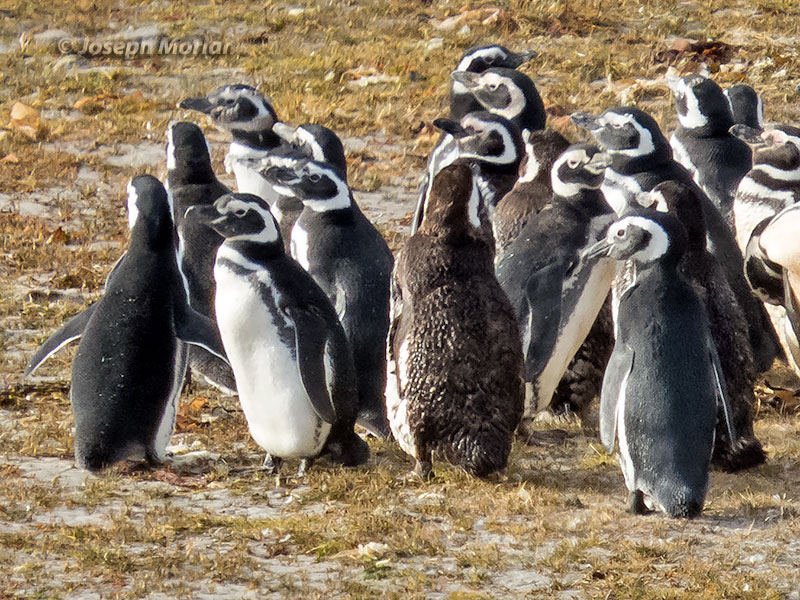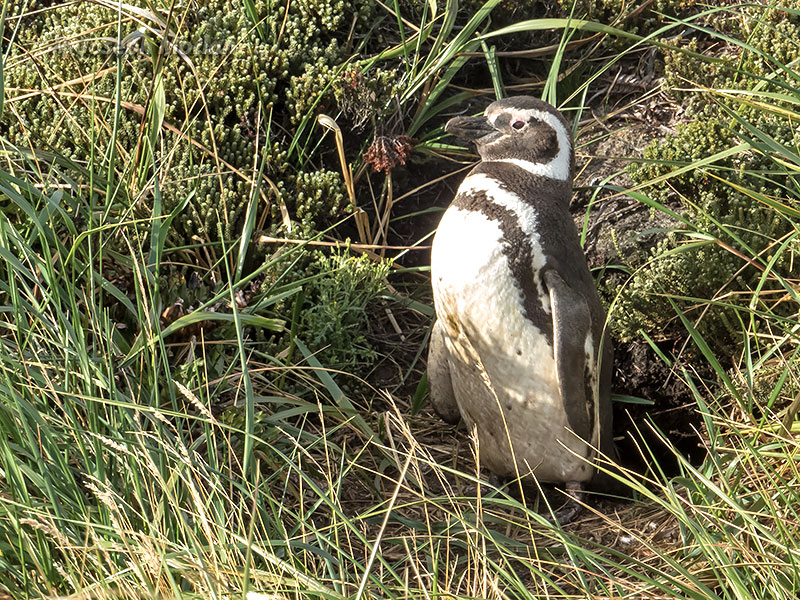

This is a migratory species arriving on the Falklands in September for breeding and departing in mid-April. It differs from the Humboldt Penguin (S. humboldti) of Western South America in that Magellanic has double dark breast bands, wider white eyebrow stripe, and a thinner bill with less pink at its base. The pink color appears during the breeding season when molt reveals bare pink skin. Juveniles fledge in February so this burrow was not in use when I took these photos. Population declines in Argentina have caused concern and the species is listed as "near threatened" by IUCN. The main threats are oil pollution, commercial fishing, and climate change. Canon PowerShot SX50 HS
References:
BirdLife International. 2017. Spheniscus magellanicus (amended version of 2016 assessment). The IUCN Red List of Threatened Species 2017: e.T22697822A119167908. Downloaded on 22 May 2018.
Falklands Conservation - Magellanic penguin (retrieved from http://www.falklandsconservation.com/wildlife/penguins/magellanic on 22 May 2018)
Jarmillo, A. (2003). Birds of Chile. Princeton Univ. Press. Princeton.
Martínez, I., Christie, D.A., Jutglar, F., Garcia, E.F.J. & Kirwan, G.M. (2018). Magellanic Penguin (Spheniscus magellanicus). In: del Hoyo, J., Elliott, A., Sargatal, J., Christie, D.A. & de Juana, E. (eds.). Handbook of the Birds of the World Alive. Lynx Edicions, Barcelona. (retrieved from https://www.hbw.com/node/52471 on 22 May 2018).
Shirihai, H. (2002) A Complete Guide to Antarctic Wildlife. The Birds and Marine Mammals of the Antarctic Continent and the Southern Ocean. Princeton University Press: Princeton & Oxford.